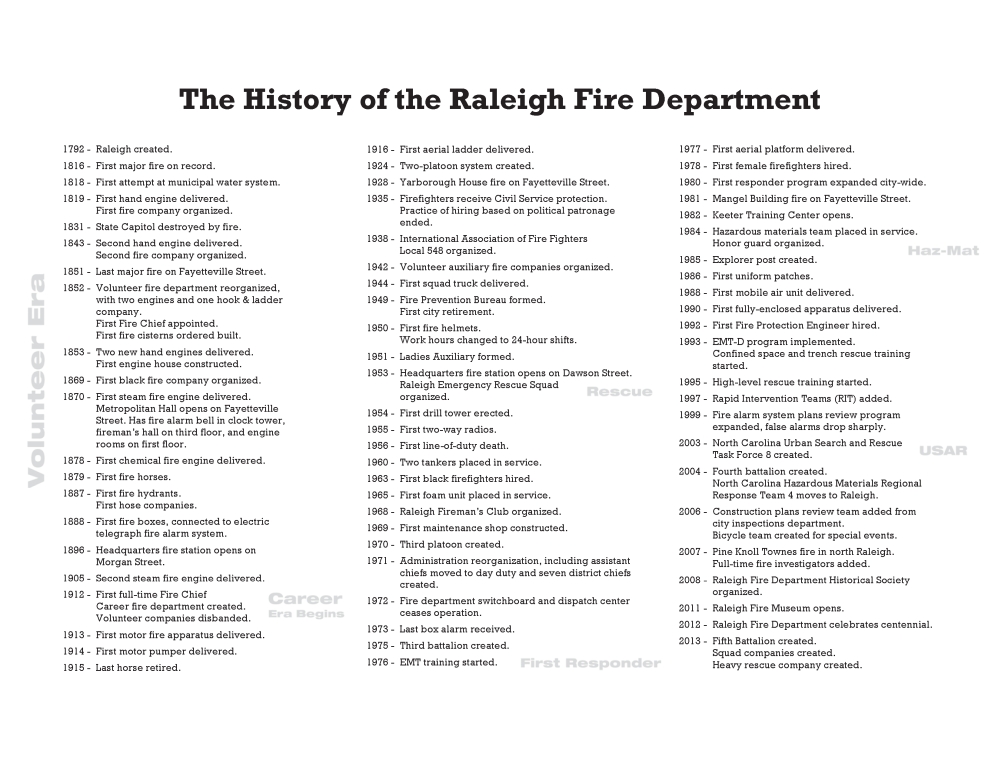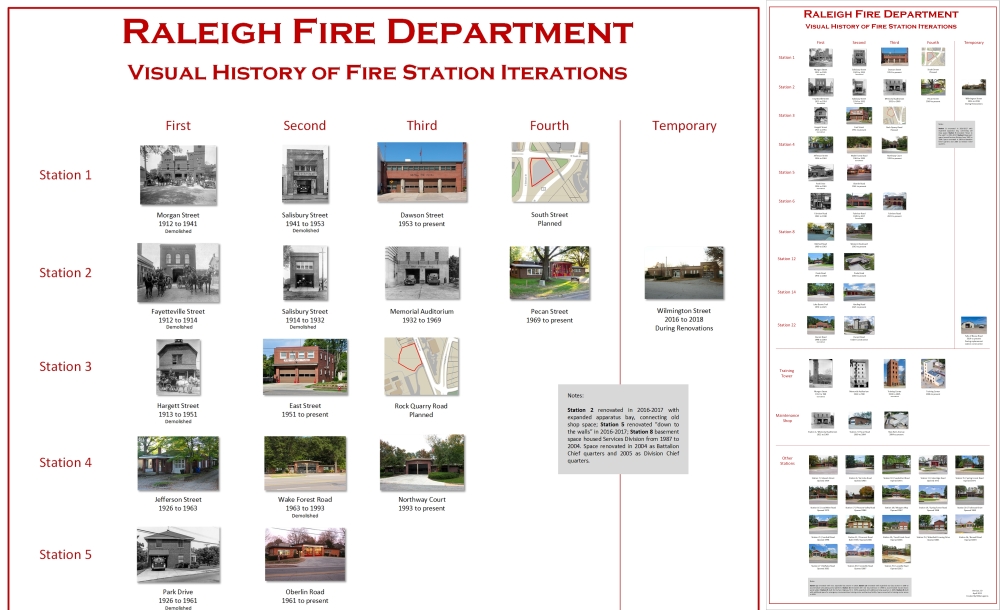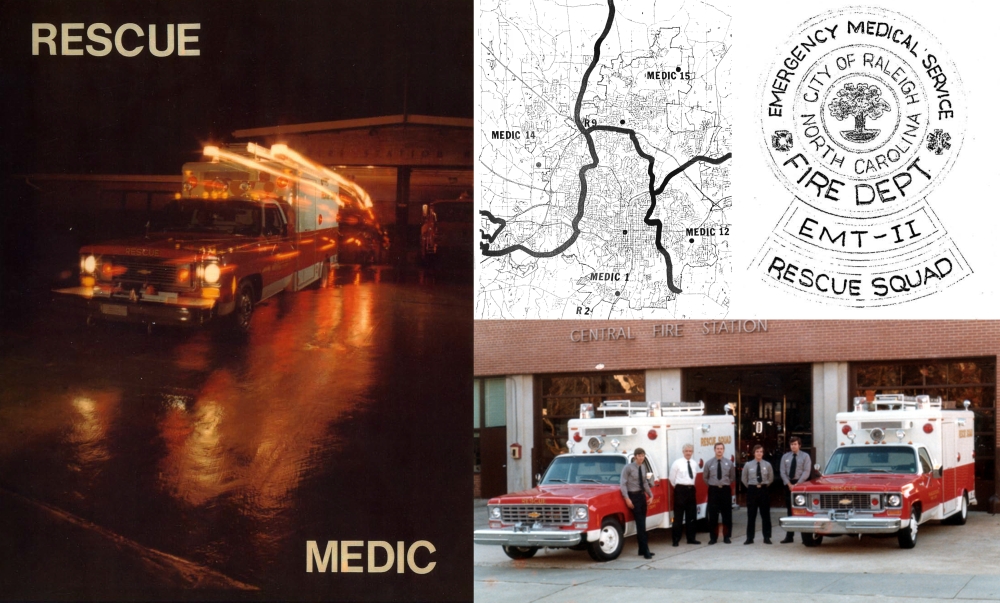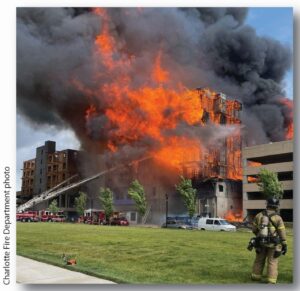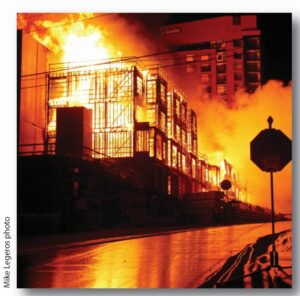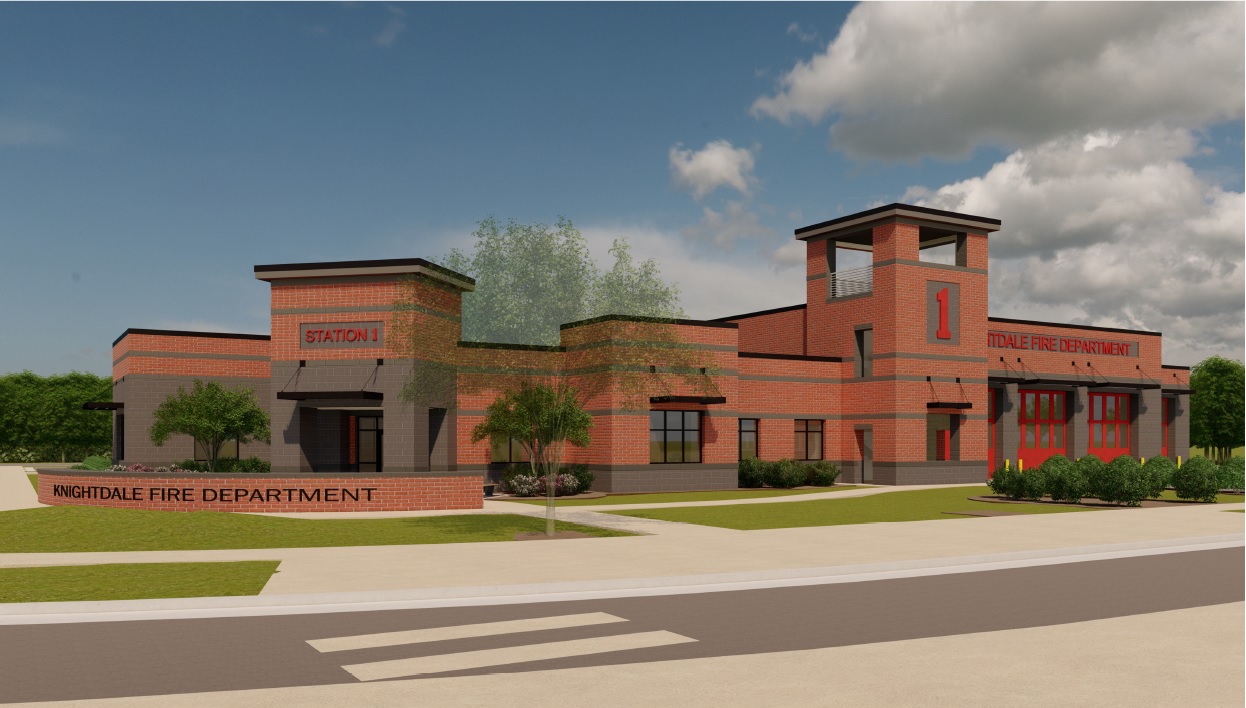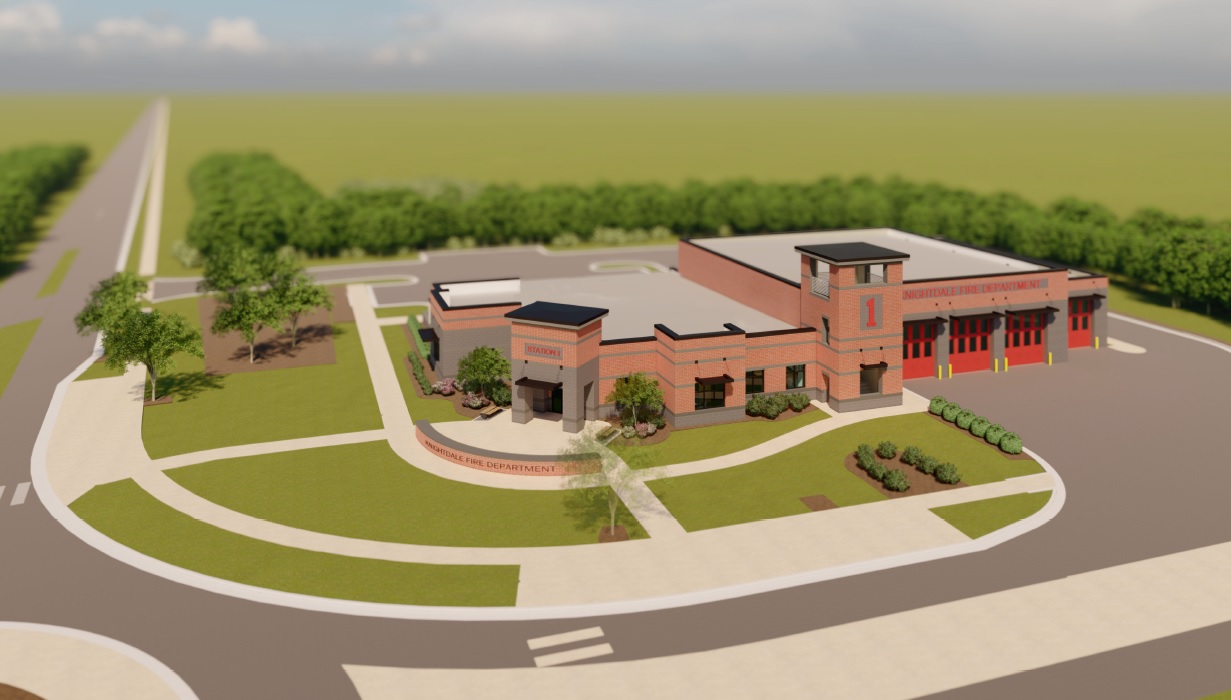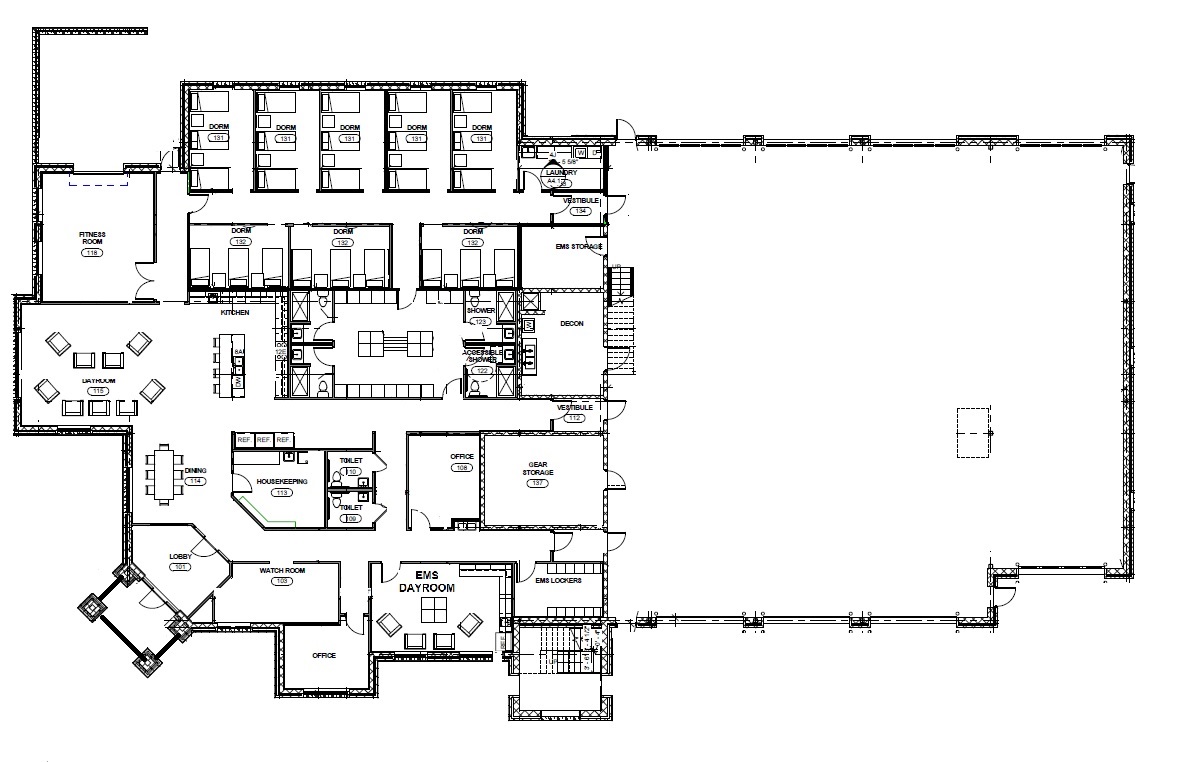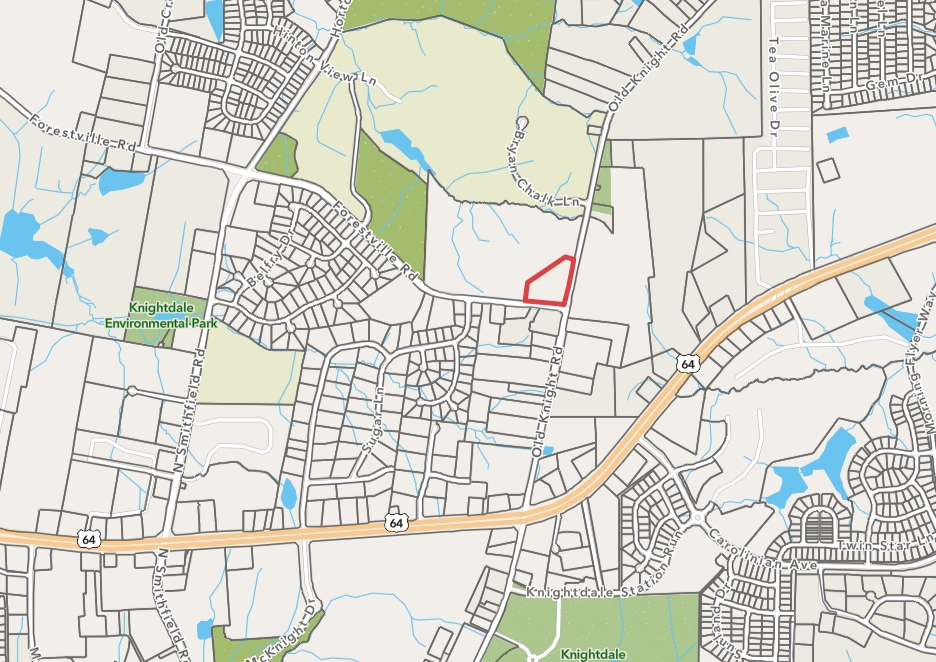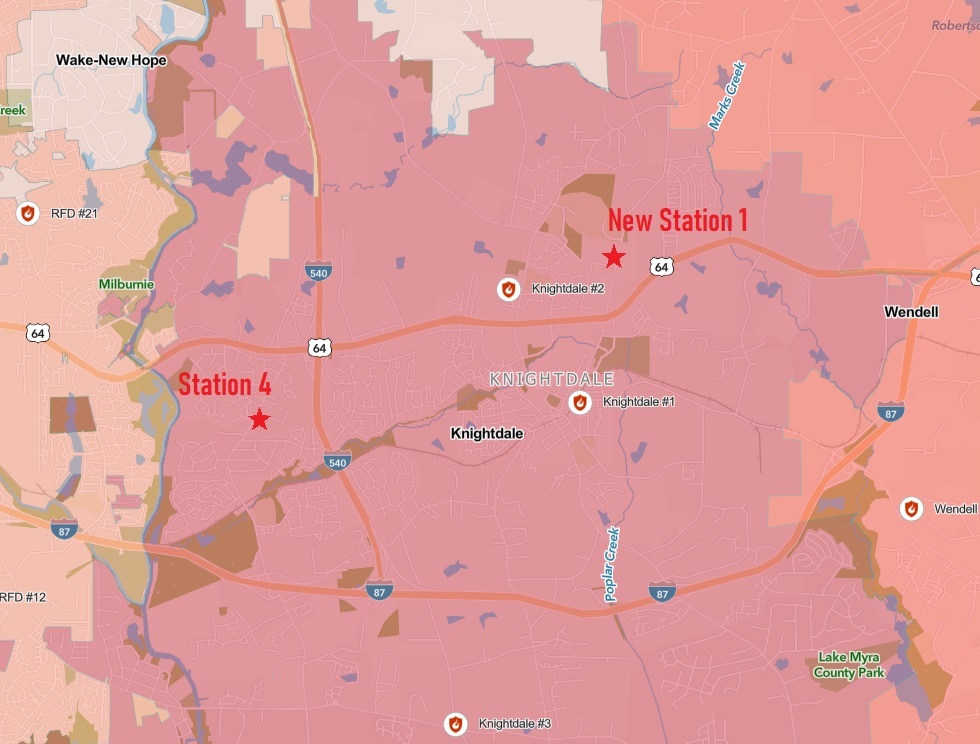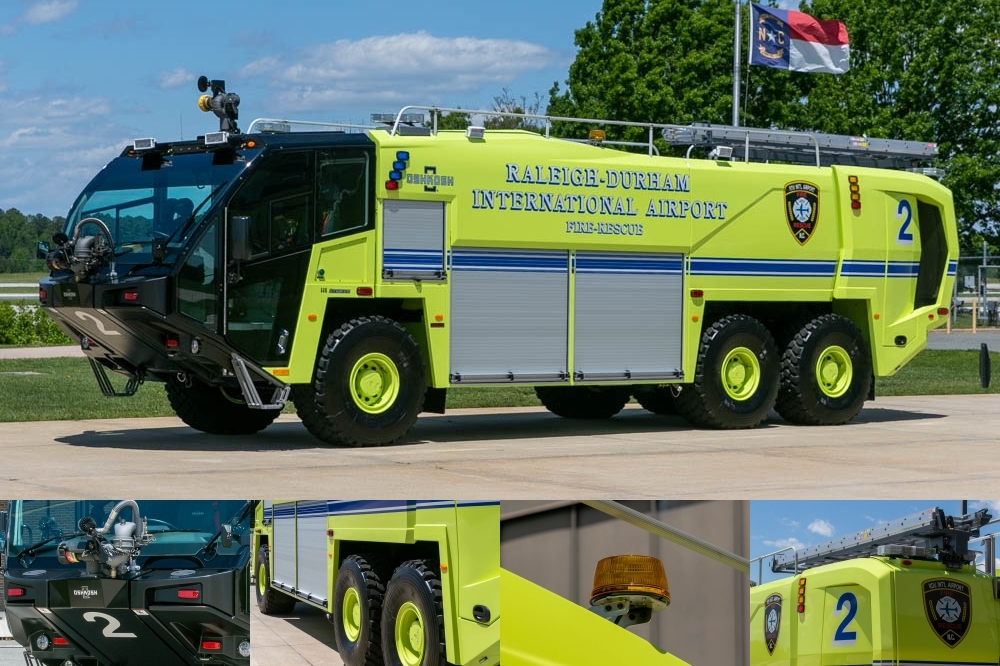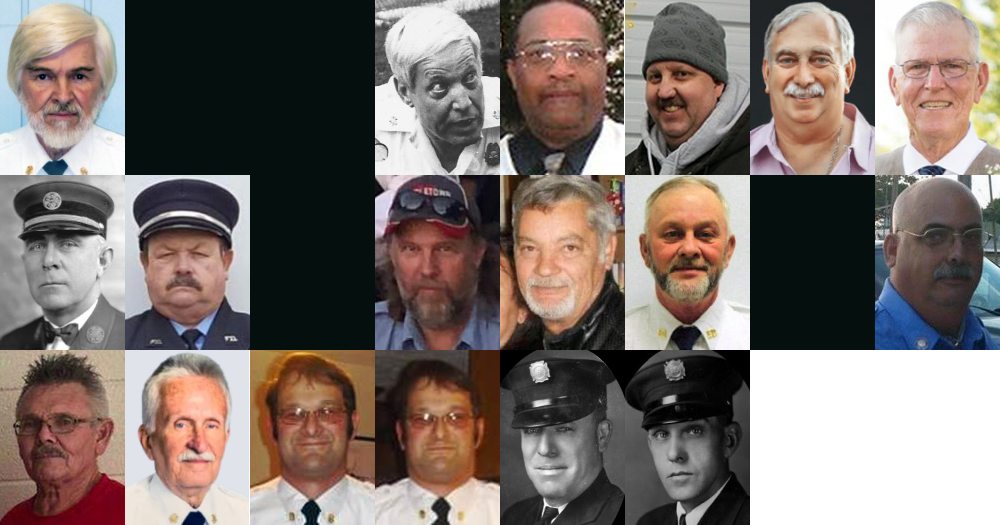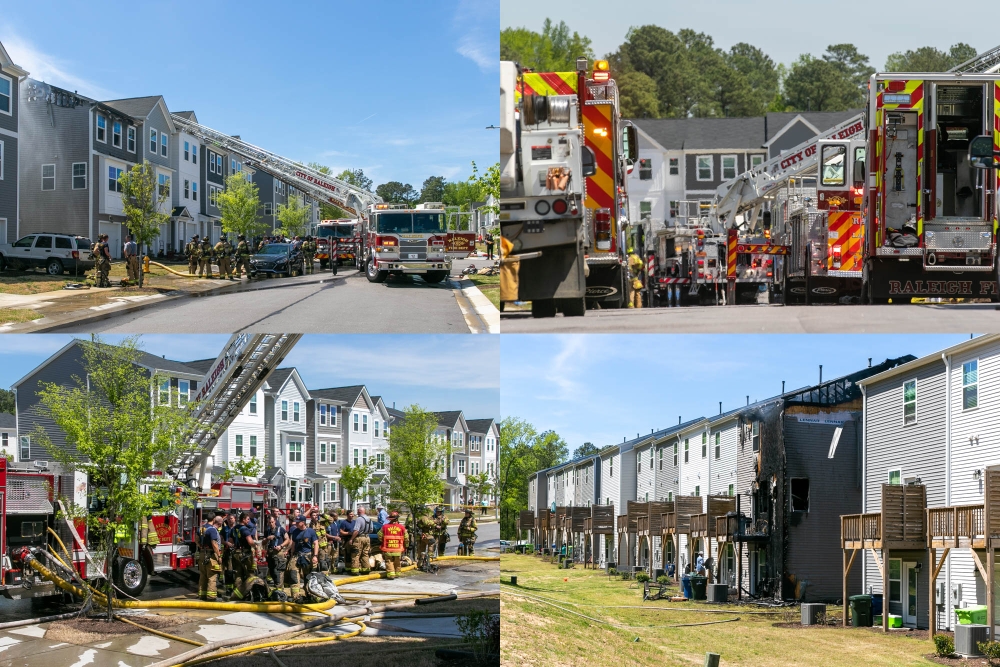Here’s a chart of milestones of the Raleigh Fire Department, created in 2013 for the Raleigh Fire Museum.
Visual History of Raleigh Fire Stations
This is a blog version of a Facebook posting from April 2021.
New from the Legeros History Labs. Each and every iteration of city fire stations with multiple versions. Plus the training tower and shop. Plus pics of all the one-and-done (to date) stations.
See other visual histories
Raleigh-Wake County Rescue Medic Proposal, 1976
This is an updated version of a blog archives posting from April 2011.
Let’s go back in time to 1976, when city and county officials were working to provide a better level of emergency medical service to residents of Raleigh and its suburban areas outside the city limits. Funeral homes hadn’t transported patients for about a decade. Various private ambulance companies had come and gone. The current provider for Raleigh residents was Beacon Ambulance Service, operating under that name since 1969. They also answered calls in the county.
The Raleigh Fire Department rescue squad– now with two units, since 1975– also transported patients in a pinch and notably when Beacon units were unavailable. But neither fire nor ambulance personnel were providing much in the way of advanced first aid. The First Responder program was still a few years away, as well.
Outside of the city, there were community rescue squads operating in Apex, Cary, Wake Forest, Wendell, and Zebulon. Some of those had been around for over a decade; others were fairly new. Six Forks Rescue Squad started that year, in 1976. They were staffed with volunteer members.
Beacon had been receiving a subsidy from the county and had asked for an increase in 1975. That and other issues had both city and county officials considering their options for the best combination ambulance and medical service for Raleigh residents. Thus the proposed Rescue Medic program, a city-county initiative to add Emergency Medical Technician-staffed ambulances to the Raleigh Fire Department.
It proposed creating four two-person medic units that would be housed at four fire stations: Station 1, Station 10, Station 6/14, and Station 4/15. The fire department’s two rescue squads would be housed at Station 2 and Station 9. And their response areas would include some territory outside the city limits.
The proposal was created for the Wake County Office of Emergency Management. Staffing, equipment, response projections, alternate models, it’s all here. The plan was not adopted, of course. The county instead created its own EMS agency that year.
Read the Rescue Medic proposal (PDF)
Read detailed research on the history of Wake County EMS including all about ambulance and EMS service in Raleigh (PDF).
Read about the history of Raleigh’s rescue units (PDF)
Comparing Charlotte’s SouthPark and Raleigh’s Metropolitan Fires
Let’s comparing and contrasting Charlotte’s SouthPark fire (May 2023) and Raleigh’s Metropolitan fire (March 2017). See our prior posting about the Charlotte fire.
Sources:
- Legeros blog posting about the Charlotte SouthPark fire
- Legeros web page about the Raleigh Metropolitan fire
New Knightdale Station 1
On Wednesday, May 24, 2023, the town of Knightdale held a groundbreaking ceremony for new Station 1 at the intersection of Old Knight Road and Forestville Road.
The 16,128 square-foot facility will house both KFD and Wake County EMS. The $6.8 million facility will be located on a 3.64 acre site.
When completed, the current Station 1 on Hester Street will be renamed Station 2, and the current Station 2 on Steeple Square Court will be relocated to Hester Street, and that facility will undergo a multi-million dollar renovation into a new fire and police administrative building.
The town of Knightdale is also building a fourth fire station on Hodge Road. Read about that project.
Five Alarms in Charlotte on May 23, 2023.

Brett Lipman photo top, Shevaun Bryan photo bottom left, TBD bottom right
Listen to radio traffic (YouTube)
View a diagram of the scene (JPG)
Read comparison with Raleigh’s Metropolitan fire in 2017
Read after-action report published in 2024.
Five alarms were struck in Charlotte on May 18, 2023, for an apartment building under construction. Modera SouthPark at 7740 Liberty Row Drive.
Below is a run card and notes from listening to the radio traffic.
General
– Five alarms
– Dispatched 9:04 a.m. as vehicle fire in parking deck, at the base of the fire building.
– Fire spread to apartment building under construction, above the deck, Modera SouthPark at 7740 Liberty Row Drive. Seven-story structure with 180K/190K square-feet.
– 15 people rescued, including a tower crane operator
– Mayday issued, two firefighters rescued
– Two civilians treated and released with minor injuries
– One construction worker later found, deceased
– One more construction worker unaccounted for
– Over 90 firefighters on scene
– Ladder 2 damaged, among other apparatus
– Collapses on three sides
– Damage to nearby buildings, including rooftop fires due to spreading embers
– Damage to several cars in the parking deck, from the high heat
Run Card
See this Facebook posting for the time being.
Narrative Notes
Transcribed from radio traffic.
Also, ahem, selective notes. They’re not comprehensive.
Listen at youtube.com/watch?v=5-K7NZzufUM
First Alarm
– Dispatched 9:04 a.m.
– B5 E14 E2 E12 L16 – First alarm
– Vehicle fire 7741 Liberty Row Drive
– Unattached trailer mid-rise parking deck
– L16 first-arriving, heavy smoke showing
– L16 requests working fire for mid-rise assignment
– B1 E43 INV3 R10 Safety 1 – Working fire
– Request for two additional ladders
– L1 adds self
– Car 10 dispatched
– L2 dispatched
Second Alarm
– B7 E39 E20 E24 INV5 L24 Rehab 1 – Second alarm [09:10]
– Workers on scene advise that trailer contains liquid used for insulation. Haz-mat response requested.
– Car 2 dispatched
– Car 20 dispatched
– HM13 en route
– Car 19 dispatched
– Car 15 dispatched
– HM13 dispatched
– Caller in tower advises they can see the trailer fully involved, crews may be on the wrong side of the structure.
– Car 209 dispatched
– Attention, second alarm has been declared.
– Reports of two workers trapped on fourth floor. Request for 40-foot ladder.
– HM32 en route [?].
– Tower 26 dispatched
– HM32 dispatched
– L32 dispatched
– Car 205, Car 202 dispatched
– Seat of fire found [09:18]
– Car 10 now has command. Strike third alarm. Please set staging for both second and third alarms [09:20]
– Screaming/shouting. All companies, evacuate structure. [09:20]
Third Alarm
– B3 E19 E10 E17 L4 – Third alarm [09:20]
– Attention, third alarm has been declared.
– Station reassignment, L23 > Sta 16.
– Car 14 dispatched
– Staging at Fairview and Piedmont
– Car 16 dispatched
– Attention, all companies operating, evacuate structure [09:22]
– Car 4, E8 dispatched
– L1, set your aerial up.
– Station reassignment, E40 > Sta 24
– Request to start PAR [09:23]
– Station reassignment, E65 > Sta 16
– Request for ladder in-between buildings
– L24 has been set-up, opposite side of L2
– Station reassignment, E28 > Sta 20
– E6 dispatched
– Companies coming down balconies, use caution, lots of glass coming down
– E32 dispatched
– Attention all companies, this will be all-defensive. Also changing command structure, assigning new division. [09:30]
– Still have a crane operator trapped. “He’s getting impatient.”
Fourth Alarm – Automatic Dispatch Upon Mayday Transmission
– B8, E5, E4, E3, L3, [09:31]
– “…bail out and we’ll get you off to the side.” [09:32]
– Attention, fourth alarm has been declared.
– Command receives mayday from L1. [09:33]
– Sixth floor [stairwell?]. Need two RIT packs.
– Car 800 dispatched
– All other companies than RIT, hold traffic.
– L1 is evacuating.
– L1, all personnel are out of structure. Mayday can be cancelled. [09:38]
– Car 21 with emergency traffic. Crane operator reports high heat in the cab. But there’s a breeze [so he’s getting air?] [09:39]
– Put L2 straight up, to protect the crane operator.
– Station reassignment, E40 > Sta 32
– Need to move L2, the heat is melting the lens
– Station reassignment, L32 > Sta 1
– Crane operator is 160 feet above ground.
– Partial collapse on delta side, fire building, impinging on parking deck next door. [09:42]
– Other collapse conditions note, possible partial collapse of crane.
– All companies on B side, begin evacuating that area. [09:44]
– Ladder 2 remaining in place. Only thing protecting the crane operator.
– Car 2 now command.
– Directions to move apparatus, shut down ladders, move out of collapse.
– B division to command, urgent traffic. [09:47]
– Collapse on this side, leaving Ladder 2 alone, flowing. Truck is being sacrificed at this time.
– Station reassignment, E27 > Sta 2
– Also unmanned monitors on B division.
– A side beginning to collapse [09:49]
– Crane needs water on it, near the base. Starting to off gas.
– Some cars on fire in the parking deck.
– Station reassignment, E33 > Sta 39
– E14 and L16 catching on fire. Working on moving.
– Station reassignment, E18 > Sta 18
– Collapse on C side now.
– INV2 dispatched
– Give me another alarm. [09:56]
– R10 personnel at base of crane, with rope and harness for rescue. [09:56]
Fifth Alarm
– B4 E11 E16 E28 L27 [09:56]
– Don’t put the personnel on the crane, it looks like it’s [something has fallen over, onto the crane?]
– Attention, fifth alarm has been declared [09:58]
– Attention “B” side companies, get ready for a collapse. Move out of the collapse zone.
– Recommend getting a helicopter from CMPD or NCANG for aerial rescue.
– Report of four people on balcony of hotel directly across, trapped.
– L31 dispatched
– E65 dispatched
– Car 7 dispatched
– Station reassignment, L23 > Sta 24
– _____ dispatched
– All companies, B/C corner about to collapse. [10:05]
– Can you notify water department, we need pressure boost?
– [ Discussion of crew inside exposure, with fire impinging ]
– We need to get water on that crane.
– We can see the crane operator, he’s still moving around.
– We’re in communication with the crane operator. Just keep it cool, he’s flyin’ high, he’s doing good.
– Working on communicating with NCANG in Salisbury for helo rescue.
– All crane rescue/RIT companies change to separate radio channel
– Need water “all over” the crane, mainly on the operator. Once it cools down, rescue will go and get him. It’s extremely hot, but its integrity seems intact.
– Crane operating has exited cab. Ready to climb down shaft. [10:11]
– “B” side companies, move to another channel (Hotel).
– Station reassignment, E33 > Sta 10
– L18 > Sta 4
– Rescue is “fixing to climb” the tower. [10:14]
– Can we get water supply on another channel? [10:15]
– Station reassignment, Pineville E2 > Sta 39
– Station reassignment, Harrisburg E2 > Sta 27
– Exposure building (Hilton Canopy Building) is catching on fire, they’re trying to evacuate people [10:17]
– Station reassignment, Steele Creek E1 > Sta 26
– Stop ladder flowing on tower. [10:19]
– Rescue 10 is attempting rescue of tower operator.
– CMPD helicopter en route as back up, landing zone identified, but they don’t have any rope or mechanism to lift. – Need NCANG unit out of Salisbury.
– Station reassignment, [unintelligible] > Sta 42
– CMPD helicopter has landing. Request for NCANG has been declined.
– All units on Charlie, hold traffic unless urgent unless you’re part of the crane rescue team.
– RIT packs, gloves, etc. all ready for crane operator, when he comes down. [10:29]
– Attention all stations/units, per Deputy Fire Chief, do not call into Fire Alarm (dispatch) on radio unless you have an emergency.
– INV5, dispatched
– Discussion of equipment for helo, if it’s needed. [Sounds like they have a workaround, to perform helo rescue.]
– Mention of fire [on roof?] of Hilton Canopy Building.
– Mention of crane rescue crew, three firefighters. Changing/swapping positions [bottles? Equipment?] as they go up.
– Crews using extinguishers at rear of Hilton Canopy Building, need more extinguishers. [10:34]
– Highway Patrol has helicopter available, do they want them? Yes, have them come.
– Mention of a call that E40 was dispatched to, Carolina FD is handling.
– Crane operator is just outside cab, he exited as the cab had started burning.
– Is he coming down, or am I going up. He doesn’t have any gloves and it’s hot. If you can, go up and get him. [10:38]
– Reports of multiple spot fires in the building. Also, fire alarms throughout the building. [Hilton Canopy Building?]
– Crane operator has been reached, rescue company member “has got him” and on the way down. [10:41]
– Crane operator now safe, being moved to “C” side to be looked at by MEDIC. [10:43]
– Cancel both CMPD and SHP helicopters
– L4 setting up for exposure building
– Suggest repurposing L26 to hit sixth floor of exposure building before “it gets away from us.
– Another exposure building “just has smoke” [10:46]
– “Eight additional alarms from the alarm company”
– “Any company that does not have an assignment report to rehab”
– Car 13 dispatched
– L4 flowing into sixth floor of exposure building. [10:52]
– Crane looks stable, does not look like its leaning, etc.
– E16 removing smoke from their building.
– Two rehabs have been set up. [10:56]
– Crane company will bring equipment to measure the crane, to assess its stability and if it’s a hazard.
– We are transferring from protecting the crane frame to protecting the “B” exposure. [11:00]
– Station Reassignment, Tanker 33 > Sta 43
– Station Reassignment, Tanker 35 > Sta 11
– Station Reassignment, Tanker 40 > Sta 6
– Station Reassignment, Concord E9 > Sta 27
– Station Reassignment, Cornelius E3 [H&L 44] > Sta 27
Additional Alarm
– B21 [?], B25, E1, E30, E33, L23 – Working fire, 6135 Park South Drive (fire on roof, nearby building)
– Tanker 37 dispatched – 6135 Park South Drive
– Station Reassignment, [garbled] > Sta [garbled]
– [garbled], dispatched – 6135 Park South Drive
– Brush 5, dispatched – 6135 Park South Drive
– B4, dispatched – 6135 Park South Drive
– Car 904, Rescue 89 [reserve] on scene – 6135 Park South Drive
– Davidson Tower 1 answering calls in city
– B27 in command on Park South [11:15]
– Rehab [at main fire] moving to separate channel
– Park South Drive, several spot fires found, requesting roof saws
[ Transcription stopped at 11:17:07, after Fire Ops 1B transmission lasting 17 seconds ]
Johnston County Foam Units
This content was originally posted on Facebook in May 2020.
In the late 1970s, the first foam unit in Johnston County was created as a project of the Johnston County Firemen’s Association. The tractor-drawn tanker had a circa 1970 White 4000 tractor and a 1957 Heil tanker body, 6000 gallons, that had been modified to also carry 800 gallons of foam. It was also equipped with a pump and two turrets atop the trailer. The truck was placed in service in/around 1979 and housed at the Selma Fire Department, due to its proximity to the oil terminal.
Here’s the timeline:
- On July 15, 1974, the county board of commissioners received a request from the Johnston County Firemen’s Association (JCFA) for a foam truck to be added to the county’s roster of fire equipment. They stated that a fully-equipped foam truck would cost approximately $35,000. The board deferred action and asked two commissioners to investigate the possibility of federal funding for the project.
- On October 15, 1974, the board received a request for $2,000 to help the JCFA purchase materials and construct a “foam tank truck” for county fire protection. The group told the board that they planned to build the tanker themselves. The request was approved.
- On March 1, 1976, the board approved $3,000 for the JCFA to purchase a 1957 Heil tank trailer for the foam truck project.
- The April 1976 issue of Tarheel Firefighter reprinted a Johnstonian-Sun story, that reported that a 6,000-gallon tank body had been purchased by the JCFA. Selma Fire Chief Joe Price was quoted as expecting that 12 to 18 months of construction time would be required, to acquire a cab and add equipment.
- On November 1, 1976, the board approved the donation to the county of a 1974 foam trailer owned by the Johnston County Oil Jobbers Association. It was valued at $300.
- On March 13, 1978, the board approved $3734.49 to Carroll Machine Works in Smithfield, for work on the foam truck project.
- On June 14, 1978, the board was told that the tanker trailer was nearly completed. It was parked at M. B. Jones’ Garage near the oil terminal. The JCFA and the project committee were negotiating with oil terminal officials for help purchasing a tractor to pull the tanker. The board was also told that the tanker also had a water tank and could be used at any fire. The board was also asked for funds to sand and paint the tanker. They approved the funding of the estimated $200 cost.
- On October 2, 1978, the board was told that the JCFA has received no response from the major oil companies, regarding their request to help a tractor to pull the foam trailer. The trailer was “basically complete” except for sanding and painting. The board chairman was authorized to seek assistance from the major oil companies to “secure a tractor.” Also, Mike Jones had agreed to paint the tanker if paint was provided. And one of the commissioners would see if the county “could furnish a man to do the sanding,” though “the maintenance crew is short at this time.”
- On March 22, 1979, the board received a request that the county purchase the “chemical foam” for the foam tanker. The JCFA requested 1,000 gallons, with 800 gallons for the trailer and 200 gallons for back-up. Also, they had procured a tractor, donated by the Shell Oil Company. The board approved purchase of the foam, but any foam used at a fire should be replaced by the property owner.
- On January 6, 1981, the foam tanker responded to a burning fuel tanker on Highway 70-A in Selma. The truck overturned at night, while trying to avoid a collision with another truck. The resulting fire and explosion started fires on both trucks, sent flames rising hundreds of feet in the air, and melted a 23,000-volt power line that snapped and fell on the cab of a third truck, on nearby Interstate 95. All three drivers were injured, on seriously. Source: Winston-Salem Sentinel, January 7, 1981.
- On May 25, 1981, the board received a check for $4,418.70, for the one-half of the cost of the foam used at a “wrecked tanker” on Highway 70-A near Selma. The board “discussed this matter at length” and the board resolved to seek full compensation for the foam, if possible.
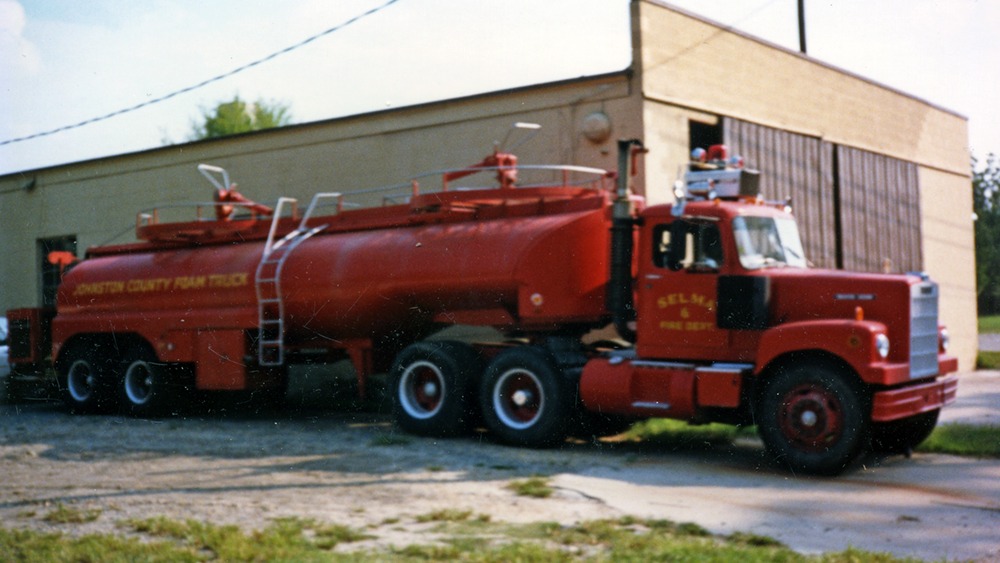 Jeff Harkey photo Continue reading ‘Johnston County Foam Units’ »
Jeff Harkey photo Continue reading ‘Johnston County Foam Units’ »
New CFR 2 at Raleigh-Durham International Airport
On Tuesday afternoon, May 2, 2023, new CFR 2 was placed in service at Raleigh-Durham International Airport (RDU). The 2022 Oshkosh Global Striker 3000, 2000/3000/420/550# was delivered in March. See gallery of Legeros pics.
It replaces a 2000 Oshkosh TI-1500, 1500/210/450#, which will be placed in reserve service as CFR 5. It’ll be the airport’s first reserve ARFF unit in a couple decades, at least. CFR 5 will be housed in a building at the fuel farm, where the ARFF foam trailer is also housed.
With the new truck, the airport’s ARFF units are all yellow or green for the first time since 2000, when the three 2000 Oshkosh ARFF units were delivered. See fleet history and pics.
Continue reading ‘New CFR 2 at Raleigh-Durham International Airport’ »
North Carolina Fallen Firefighters Ceremony – May 13, 2023
On Saturday, May 13, 2023, the following names will be added to the North Carolina Fallen Firefighters Memorial at the annual ceremony in downtown Raleigh. See below for narratives and notes, about each member and how they died.
- Richard S. Aman – Piney Grove – 2021
- Charles Barnett – Asheville – 1891 (not shown)
- Perry Barnett – Asheville – 1891 (not shown)
- Thurman C. Bishop – Fayetteville – 1983
- Willie L. Bunch – Oak City – 2021
- Gary G. Butner – Gumtree – 2022
- Kenneth K. Cameron – Pocket – 2021
- Michael D. Canada – Bear Grass – 2020
- Arthur Duckett – Asheville – 1966
- Gregory K. Faulk – Ocean Isle Beach – 2021
- Samuel L. Gorman – Asheville – 1891 (not shown)
- James D. Hensley – Brendletown – 2021
- Keith Jones – Shiloh-Danieltown Oakland – 2021
- June McNeil, Jr – Pine Terrace – 2022
- James Radford – Polly Watson – 2022
- Benjamin H. Smith – Edenton – 1947 (not shown)
- Charles W. Spry – La Grange – 2021
- William D. Stalls – Oak City – 2021
- John R. Stroup – Salem – 2022
- Clinton L. Whitley – Ferrells – 2021
- Harry Williams – Asheville – 1944
- Grady D. Wilson – Asheville – 1948
Source: ncfff.org/memorial/annual-memorial
Narratives and Notes Continue reading ‘North Carolina Fallen Firefighters Ceremony – May 13, 2023’ »
Two Alarms on Southern Magnolia Drive
See Legeros photos | Listen to radio traffic
Two alarms were struck on Wednesday, April 12, 2023, at 4937 Southern Magnolia Drive. Dispatched 12:22 p.m. for Burgundy Star Drive and Southern Magnolia Drive. Reported explosion and multiple townhomes burning. Upgraded to working fire while units were en route.
Was just up the street from Station 21, whose engine was out of quarters. Squad 7 and Engine 27 arrived about the same time, with Engine 27 taking water supply and Squad 7 starting fire attack. Hydrant found right beside Squad 7.
Heavy fire on the rear corner of an end unit, with extension to upper floors and into attic. Three (four?) handlines taken inside. Ladder 12 (on reserve) and Ladder 15 with aerials to the roof, with cuts made in the roof.
Second-alarm requested about ten [?] minutes into the incident, units directed to stage at Station 21. Controlled 12:58 p.m. One family displaced. Most (all?) second-alarm companies soon released.
Run Card
First alarm: E27, E19, Sq7, E26, L12, L15, R16, B5, B2, ISO14
Working fire: DC1, B1, A28, Chief Investigator
Added: B3
Second alarm: E1, E9, E28, L1, L6
Also on scene: OFM Chief, Prof. Dev. Chief, and other staff from both divisions.
Medical: EMS60, EMS40, EMS__, D4, others?
